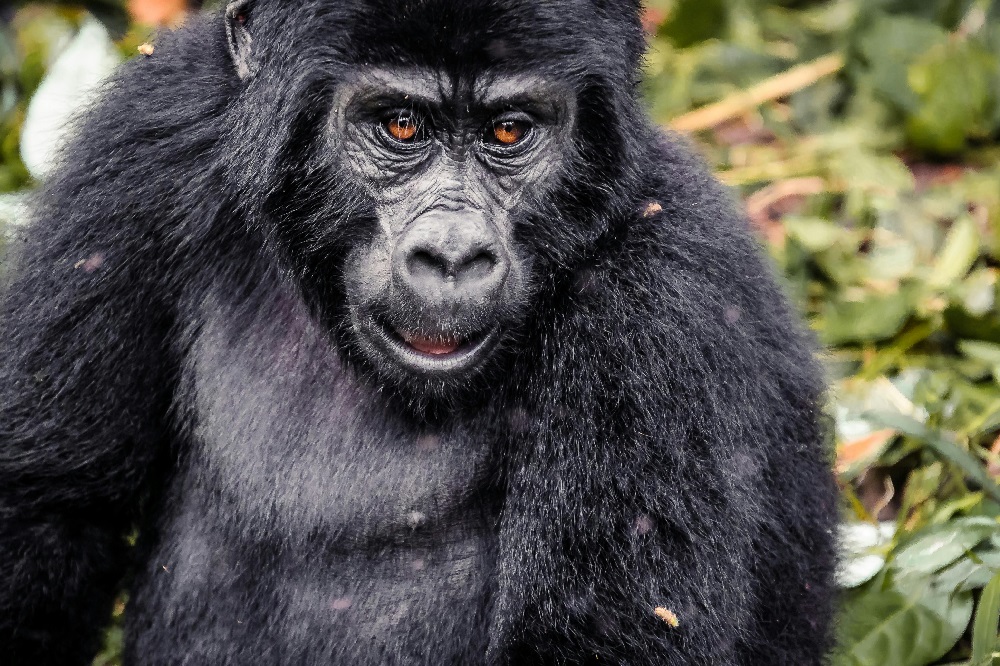When planning a trip to Uganda for gorilla trekking, one of the first questions travelers ask is about safety. Uganda has worked very hard to make sure tourists are protected. Rangers and guides are always present on treks, and the government values tourism as one of its most important industries. Many visitors from all over the world report feeling very safe during their trips. The experience is carefully managed, and visitors are never sent into the forest without expert protection.
How Fit Do You Need to Be?
To take part in gorilla trekking, tourists need to be reasonably fit. The trek can last from two to six hours depending on where the gorillas are located. Trails can be steep, muddy, and thick with vegetation. However, you do not need to be an athlete. Most people who prepare by walking or hiking a little before their trip find the trek manageable. If someone cannot walk long distances, porters are available to help carry bags or even assist with the trek itself.
Uganda vs Rwanda Safety
Some tourists compare Uganda with Rwanda when deciding where to trek. Both countries are safe, but they offer slightly different experiences. Rwanda’s treks are usually shorter, while Uganda has more gorilla families to visit. Uganda is also more affordable than Rwanda. In terms of safety, both countries provide excellent protection for visitors, so the choice often depends on budget and the type of adventure you want.
Vaccines and Health Precautions
Health is another part of safety. Before traveling, visitors are advised to get vaccines such as yellow fever, typhoid, and hepatitis. Malaria prevention is also important in Uganda, so tourists usually take medication and use insect repellent. Doctors recommend visiting a travel clinic before the trip to make sure you are fully protected. Park rules also prevent sick people from trekking to protect gorillas from human illnesses.
What Makes Uganda Special?
Uganda is not only about the gorillas but also the whole adventure. The forests are full of wildlife such as monkeys, birds, and butterflies. The landscape is breathtaking, with misty mountains and green valleys. Many visitors also enjoy the culture, as nearby villages welcome tourists and share their traditions. This makes the trip more than just a wildlife encounter—it becomes a cultural and natural journey.
How Many Days Should You Spend?
Most people spend at least three days on a gorilla trekking safari. This gives time for travel, the trek itself, and rest afterward. Some visitors choose to do two treks to increase their chances of different experiences. Others add extra days for safaris in Queen Elizabeth National Park or to relax at Lake Bunyonyi. A longer stay often makes the trip more rewarding and less rushed.
Accommodation and the Sleep Line
Tourists stay in lodges or camps close to the parks. This is often called the “sleep line,” meaning where visitors sleep before or after the trek. Lodges range from budget guesthouses to luxury eco-lodges with amazing views. Staying close to the park gate makes it easier to start early in the morning. No matter the choice, tourists are welcomed warmly by Ugandans, who are known for their hospitality.
Safest Places for Trekking
Both Bwindi Impenetrable Forest and Mgahinga Gorilla National Park are safe choices. Bwindi is larger with more gorilla families, while Mgahinga is smaller and less crowded. All treks are guided by trained rangers who ensure visitor safety. Both parks are secure, and tourists can choose either based on their preferences for variety or quietness.
Is Uganda Still Safe in 2025?
Many travelers wonder if Uganda will remain safe for gorilla trekking in 2025 and beyond. The answer is yes. Tourism is growing, and the government keeps investing in safety and conservation. Travel advisories from most countries show Uganda as safe for tourists, especially in the gorilla trekking regions. With rising numbers of visitors each year, the future looks bright for Uganda as a top safari destination.
Is Gorilla Trekking Ethical?
Ethics are very important when it comes to gorilla trekking. Rules are strict to protect the gorillas. Tourists must keep a safe distance, wear masks when needed, and never touch the gorillas. Group sizes are limited, and only a few permits are issued each day. The money spent on permits supports conservation and helps local communities. This means that trekking not only provides tourists with a magical experience but also protects the gorillas’ future.
Do You Need a Visa for Uganda?
Most visitors need a visa to enter Uganda. This is easy to apply for online before travel. Another option is the East Africa Tourist Visa, which covers Uganda, Kenya, and Rwanda with a single visa. This is helpful for tourists who want to combine gorilla trekking with other safaris in East Africa. Having the right visa makes traveling smooth and stress-free.
Conclusion
Gorilla trekking in Uganda is one of the safest and most rewarding adventures in Africa. With strong safety rules, trained guides, protective health measures, and ethical practices, visitors can explore the forest confidently. Whether trekking in Bwindi or Mgahinga, staying for a short trip or combining it with other safaris, Uganda offers tourists not just gorillas but an unforgettable journey full of wildlife, culture, and beauty.




